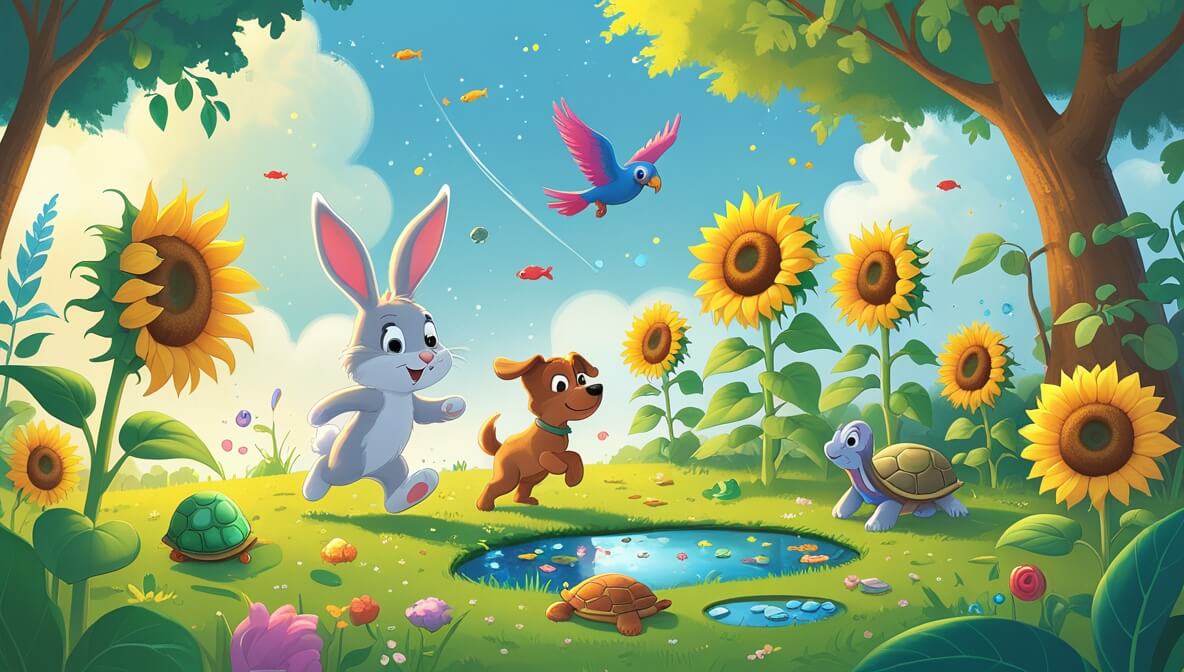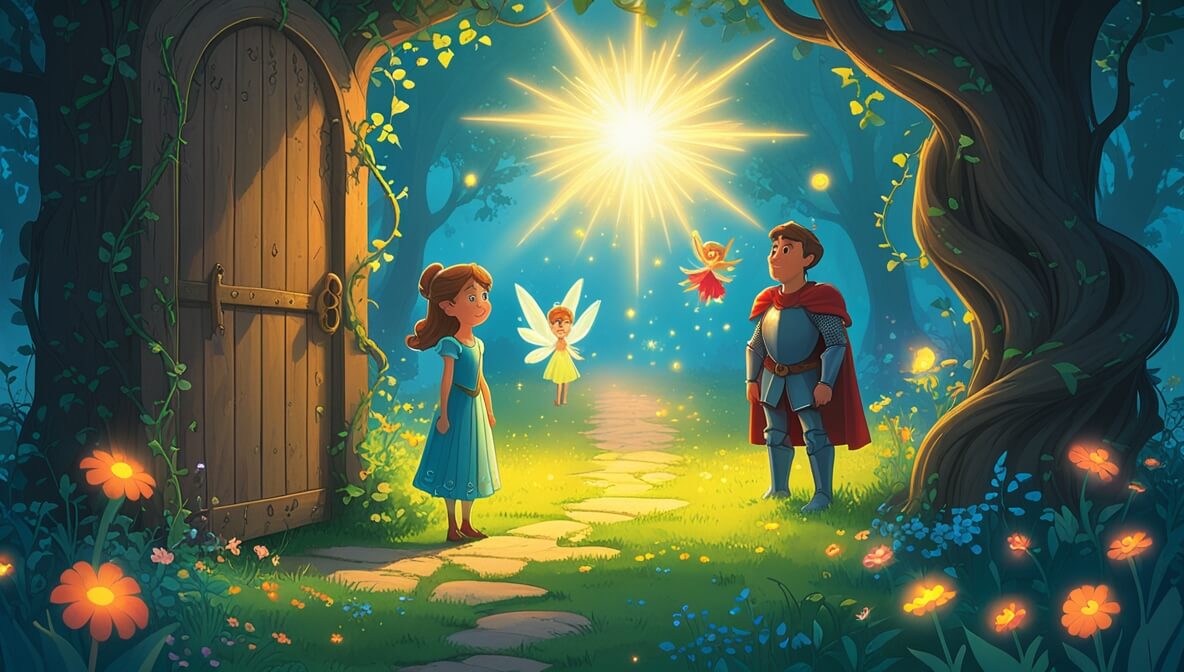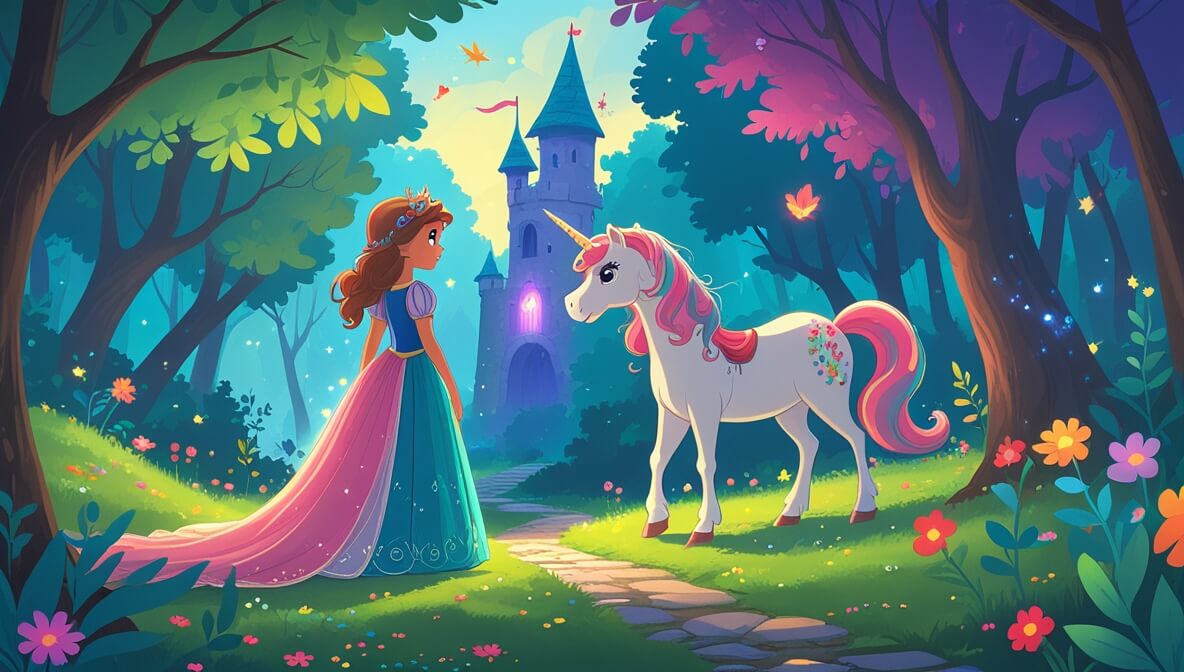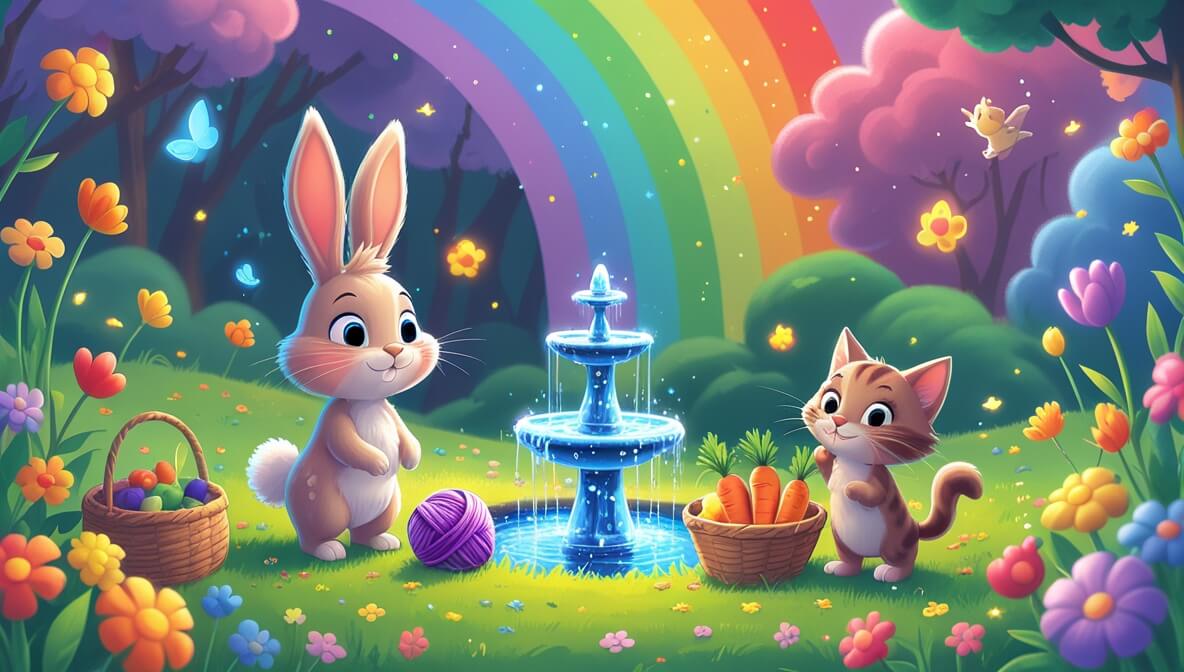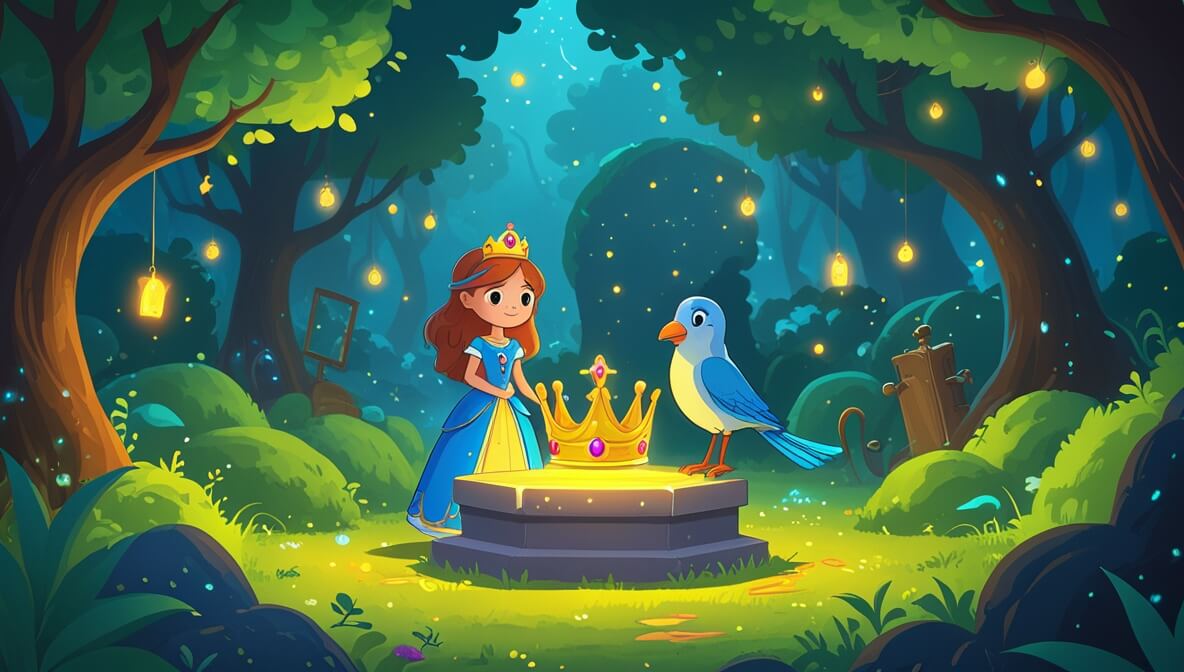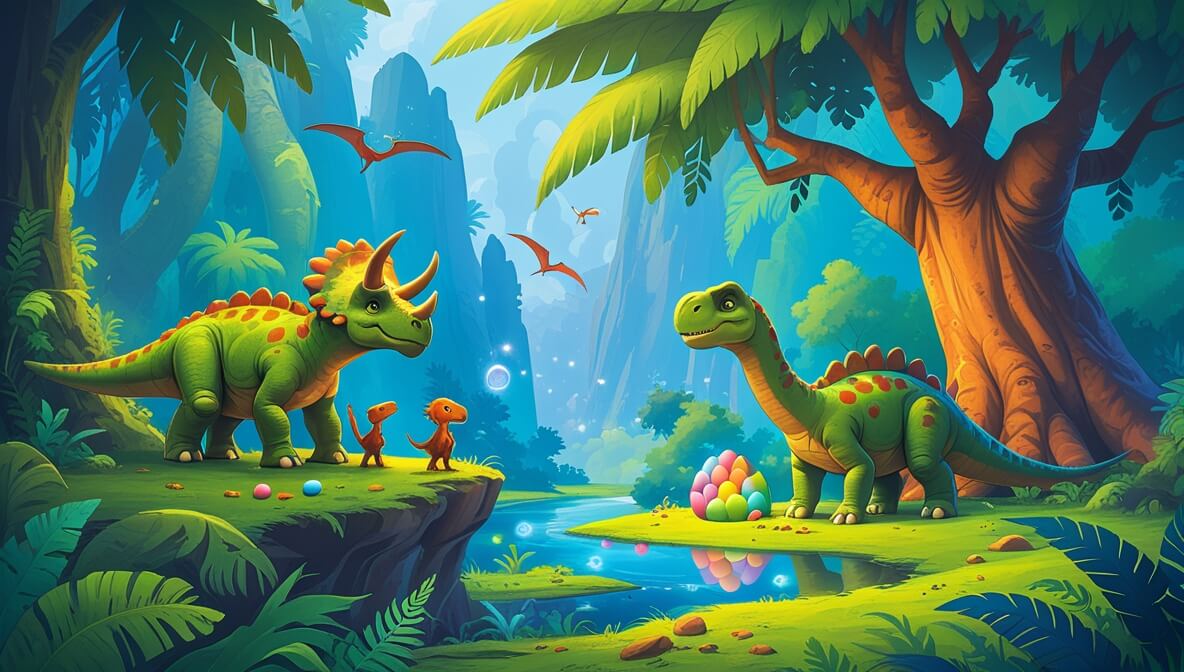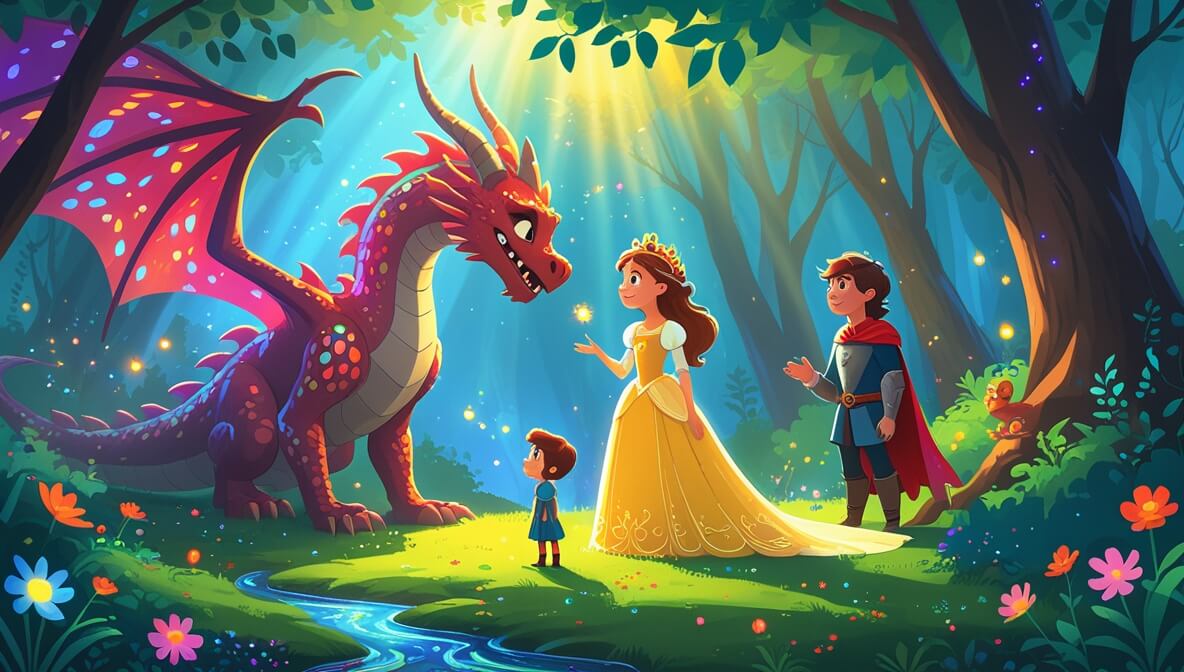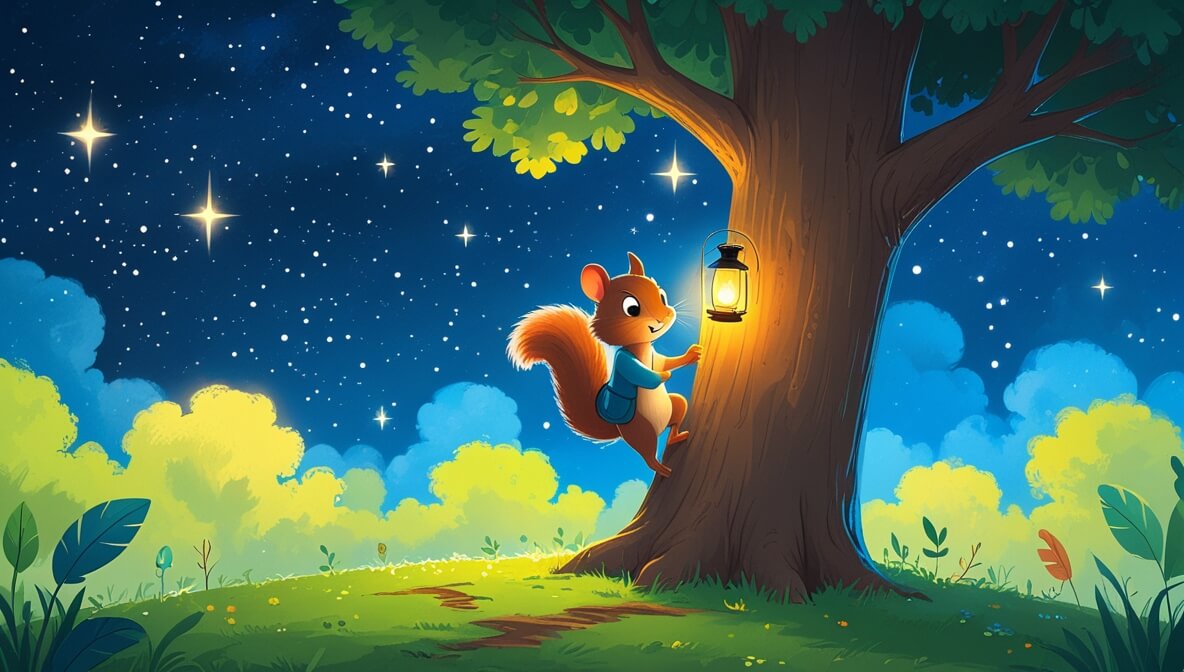Join Little Bunny and Spotty the Puppy as they discover a magical garden filled with colorful flowers and friendly creatures.
Age Recommendation
0 – 4 years
Characters
Characters:
- Little Bunny (a curious bunny with fluffy ears)
- Spotty the Puppy (a playful puppy with a wagging tail)
Story
Once upon a time, in a sunny meadow, Little Bunny hopped around, sniffing the sweet grass. His best friend, Spotty the Puppy, barked happily by his side. “Let’s explore the garden today!” Spotty woofed. Little Bunny’s eyes sparkled with excitement.
The Garden’s Secret Path
They found a secret path lined with tall sunflowers. As they walked, the flowers seemed to whisper a gentle song. “Do you hear that, Spotty?” asked Little Bunny. Spotty wagged his tail, “I hear it! It’s like magic!” Together, they followed the path deeper into the garden.
The Glittering Pond
Ahead, they saw a glittering pond with water that sparkled under the sun. “Look at the shiny fish!” exclaimed Little Bunny. Spotty dipped his paw in the cool water, making ripples dance. The fish swam around, happy to have new friends.
The Friendly Creatures
In the garden, they met a wise old turtle and a colorful parrot. “Welcome, explorers!” said the parrot, flapping its wings. The turtle nodded slowly, “You’ve found our magical garden. Here, everyone is a friend.” Little Bunny and Spotty felt a warm glow in their hearts.
The Cozy Nap
As the sun began to set, Little Bunny yawned, and Spotty stretched. “Let’s rest here,” suggested Spotty. Snuggled under a tree, they closed their eyes, dreaming of their wonderful day. The garden hummed a lullaby, wrapping them in sweet dreams.
The end.
Moral of the Story
Friendship and exploration bring joy and magic to everyday life.
Questions to Think About
- What did Little Bunny and Spotty discover in the garden?
- How did they feel when they met new friends?
- What do you think makes a garden magical?
- Can you think of a place where you feel happy and safe?
- What would your secret garden look like?
Do You Know
- Did you know sunflowers turn to face the sun? It’s called heliotropism.
- Some fish can recognize their human friends!
Word Explorer
- Meadow: A large, open area of grass.
- Whisper: To speak very softly.
- Lullaby: A soft song to help someone sleep.
Emotions in the Story
- Excitement: When Little Bunny and Spotty started their adventure.
- Joy: When they met the friendly creatures in the garden.
- Calm: As they listened to the garden’s lullaby and fell asleep.
Color Your Scene
Imagine the garden with its tall sunflowers and glittering pond. Draw Little Bunny and Spotty playing with the colorful fish and meeting the parrot and turtle. Use bright yellows for the sunflowers and sparkling blues for the pond.
Parents’ Corner
This story is a wonderful way to talk to your child about:
Friendship: Discuss how Little Bunny and Spotty explore and enjoy the garden together, making new friends along the way.
Curiosity and Exploration: Encourage your child to discover new things and ask questions about the world around them.
Imagination: Foster creativity by imagining what a magical garden might look like.
Nature Appreciation: Talk about the beauty of nature and why it’s important to care for our environment.

